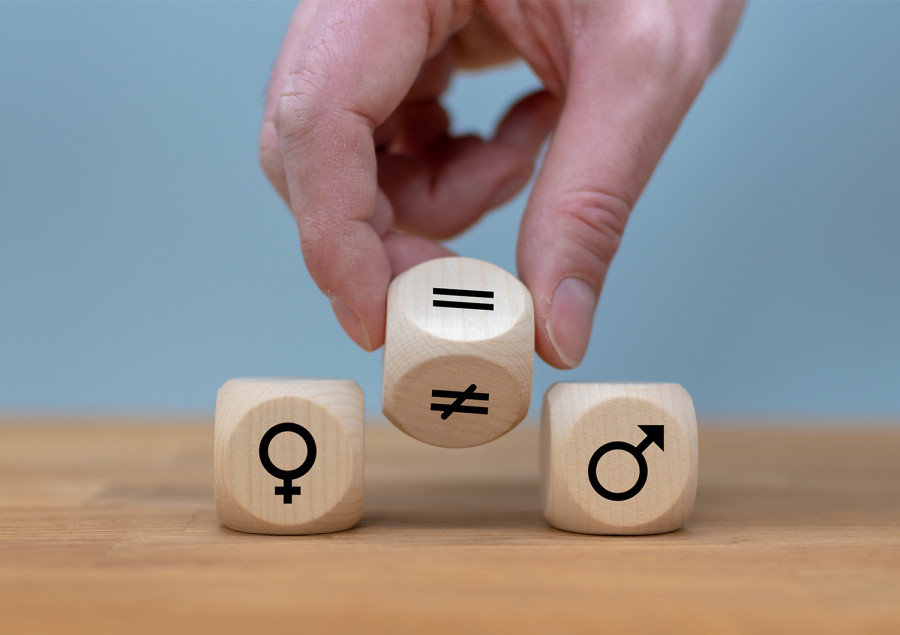Columns
Women and the media
While newsrooms have come a long way, they must do more to become truly inclusive.
Narayan P Ghimire
Among various issues of advocacy, women empowerment and participation in myriad sectors is one of the significant agendas the Nepali media has been forwarding. But while that effort is commendable, it is important to analyse how inclusive and women-friendly the media sector is.
Weaker sex, incompetence and social construct—these are some of the answers we hear often to a question as to why there are fewer women in the media. To this question, women often express non-cooperation from colleagues, discrimination and belittling to be the reasons. Gender inequality in the media is not new at all. Over the years, more women are doing journalism, too. Yet, most of them remain invisible.
In a question whether the visibility of women in news byline and news source counts for women empowerment, the chief executive at Freedom Forum, Taranath Dahal, asserts, ‘Of course, the change realised at media houses is noteworthy. From maintaining discipline among colleagues to respecting women’s sensitivity, the Freedom Forum's continued advocacy for a better work atmosphere for women journalists augmented women journalists' visibility, creating their space for in-house policy interference’.
The Freedom Forum, after rigorously monitoring the news content of major dailies, a few online portals and 21 dailies representing each province for 3 months, noticed that there had been an increase in women bylines. More women were being quoted as news sources too. Media houses where there were no women bylines in 2016 had increased this to seven female bylines. This is important for women’s realities to be covered and their voices heard. Similarly, many media houses have made it a point to include at least one opinion article by a female writer.
Of course, one is free to argue that mere advocacy by an organisation does not suffice for change in the culture surrounding journalism. Changes can never be brought by standalone efforts. Endeavours must be sustained, and collectively enshrined.
Having more women in the newsroom will help highlight social issues more. Increased reporting of social issues not only shakes up media content but also creates pressure on political fronts. It also forces their male colleagues to change their perspective towards them.
While the media has come a long way, there are still many changes it needs to make to make the newsrooms more inclusive. For this, effective retention policy, employment and mobilisation of female journalists cannot be overstated. Oftentimes, in the absence of women reporters, gender-related issues tend to be overlooked. While it is important to maintain objectivity while reporting, most men can only sympathise with women’s issues. But if there is a female reporter, she can sympathise as well as empathise regarding certain issues. This added sensitivity brings about fresh perspectives and sheds new light on storytelling.
For example, when women report about issues pertaining to say, reproduction or abortion, their approach to storytelling will be much different than their male colleagues. This is because these issues impact them too. Yet, having said that, women don't necessarily have to report on issues that affect them.
Making newsrooms exclusive is an on-going process. Inclusive and dynamic media houses better serve the pluralistic values of society where all sides of a story are presented. Needless to say, gender balance is integral to inclusion. Once the voice of the voiceless becomes heard and environments previously dominated by men start having as many women employees, only then can we say the society is changing for the better.
The media often reports stories about inequality. But it must acknowledge that the sector has been patriarchal, too. Representing women equally in journalism is a desirable goal that all newsrooms must strive towards.
***
What do you think?
Dear reader, we’d like to hear from you. We regularly publish letters to the editor on contemporary issues or direct responses to something the Post has recently published. Please send your letters to [email protected] with "Letter to the Editor" in the subject line. Please include your name, location, and a contact address so one of our editors can reach out to you.




 5.47°C Kathmandu
5.47°C Kathmandu















